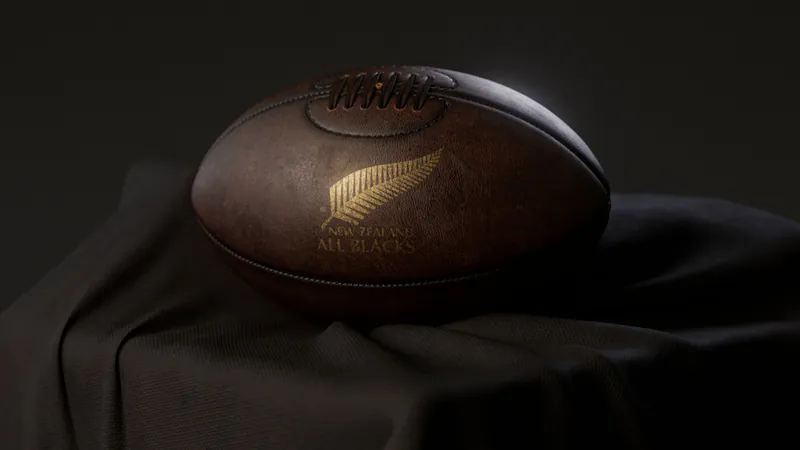
Galactic Secrets Unveiled: Astronomers Discover Lost Companion in the Perseus Cluster
2025-04-21
Author: John Tan
In a groundbreaking revelation, a team of international astronomers has unraveled a cosmic enigma by locating the remnant of a colossal, long-forgotten object that once collided with the Perseus cluster. Utilizing cutting-edge data from the Subaru Telescope, they've traced this ancient merger through a web of dark matter.
What Makes Galaxy Clusters So Incredible?
Galaxy clusters, comprising thousands of galaxies held together by gravity, are among the most massive formations in the universe. They grow through violent mergers, rivaling the most explosive events since the Big Bang itself.
The Mystique of the Perseus Cluster
About 240 million light-years away, the Perseus cluster boasts a staggering mass of 600 trillion suns. For years, it was considered a stable, 'relaxed' structure, earning the title of the "textbook example" of a post-merger state due to its seemingly calm demeanor.
Peering Beneath the Surface: Advances in Astronomy
However, recent advancements in observational techniques have granted researchers the ability to delve deeper into the cluster's structure. They found intriguing evidence of disturbances that contradicted its peaceful reputation, prompting a fundamental question: If disturbances were present, where was the object that caused them?
The Power of Gravitational Lensing
To resolve this mystery, the team turned to archival data from the Hyper Suprime-Cam on the Subaru Telescope. Gravitational lensing—a phenomenon that occurs when massive celestial bodies bend light from distant galaxies—proved to be an invaluable tool, helping to map out dark matter that remains invisible to traditional observation.
A Dark Matter Discovery!
Through this innovative technique, researchers identified a massive dark matter clump, weighing approximately 200 trillion solar masses, located around 1.4 million light-years to the west of the cluster's core. Astoundingly, this structure is tethered to the Perseus cluster by a faint yet statistically significant "dark matter bridge," providing clear evidence of past gravitational interactions.
Echoes of the Past: A Collision Story
Numerical simulations carried out by the team suggest that this dark matter substructure collided with the Perseus cluster approximately five billion years ago. The remnants of this titanic clash continue to shape the cluster's current formation.
The Missing Piece Found!
Dr. James Jee, the study's corresponding author, exclaimed, "This is the missing piece we've been looking for! All the unusual shapes and swirling gas in the Perseus cluster now fit perfectly within the narrative of a major merger." Dr. HyeongHan Kim, the lead author, added, "It took courage to challenge the existing consensus, but our findings, backed by simulations and data from the Euclid and XRISM space telescopes, strongly validate our conclusions."


 Brasil (PT)
Brasil (PT)
 Canada (EN)
Canada (EN)
 Chile (ES)
Chile (ES)
 Česko (CS)
Česko (CS)
 대한민국 (KO)
대한민국 (KO)
 España (ES)
España (ES)
 France (FR)
France (FR)
 Hong Kong (EN)
Hong Kong (EN)
 Italia (IT)
Italia (IT)
 日本 (JA)
日本 (JA)
 Magyarország (HU)
Magyarország (HU)
 Norge (NO)
Norge (NO)
 Polska (PL)
Polska (PL)
 Schweiz (DE)
Schweiz (DE)
 Singapore (EN)
Singapore (EN)
 Sverige (SV)
Sverige (SV)
 Suomi (FI)
Suomi (FI)
 Türkiye (TR)
Türkiye (TR)
 الإمارات العربية المتحدة (AR)
الإمارات العربية المتحدة (AR)